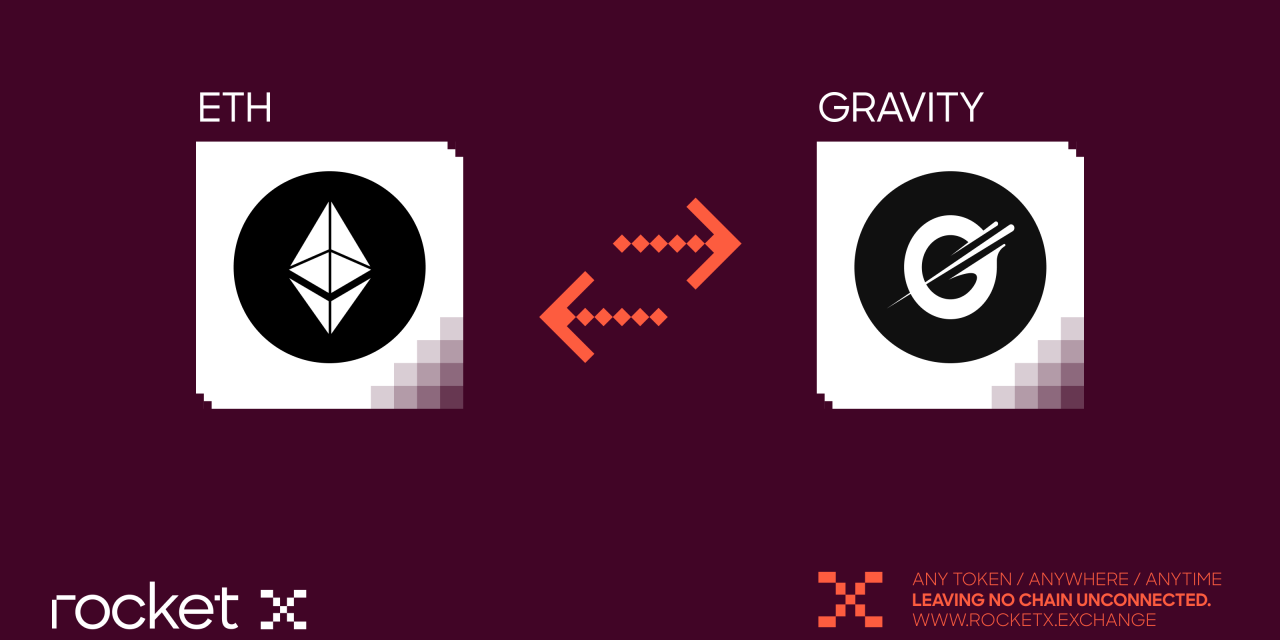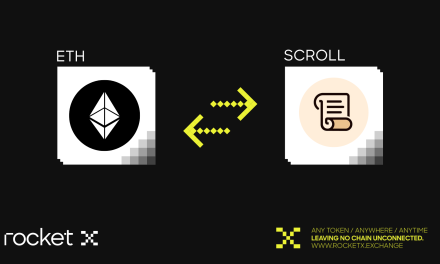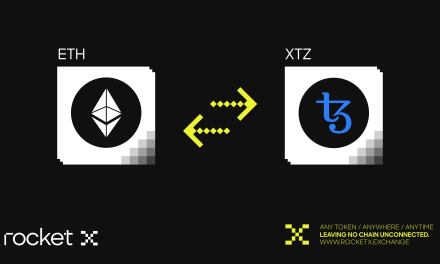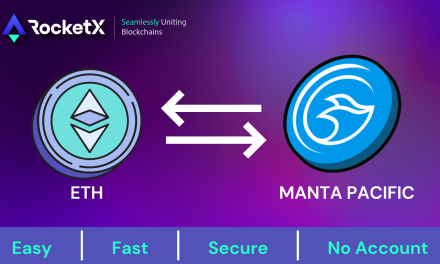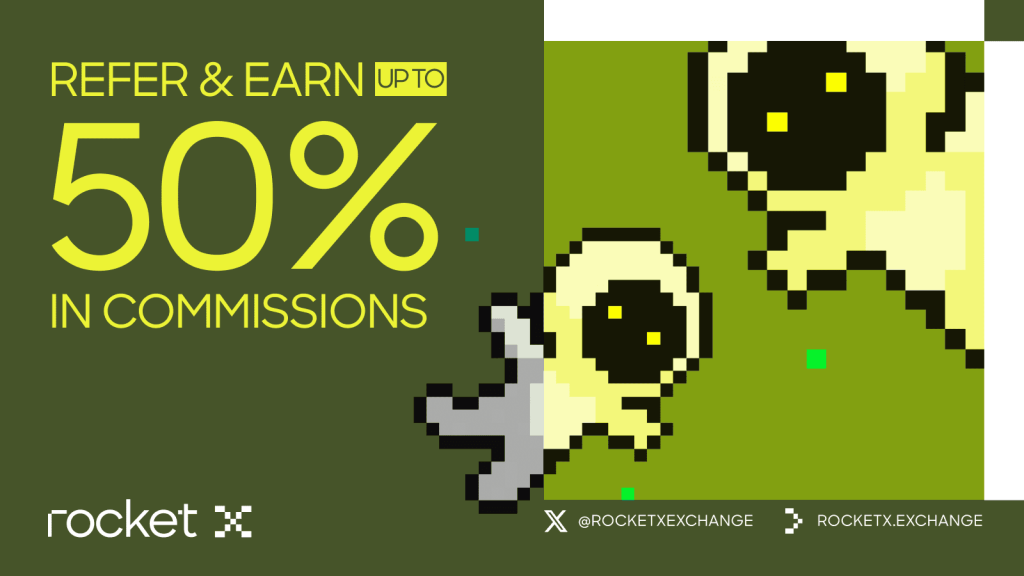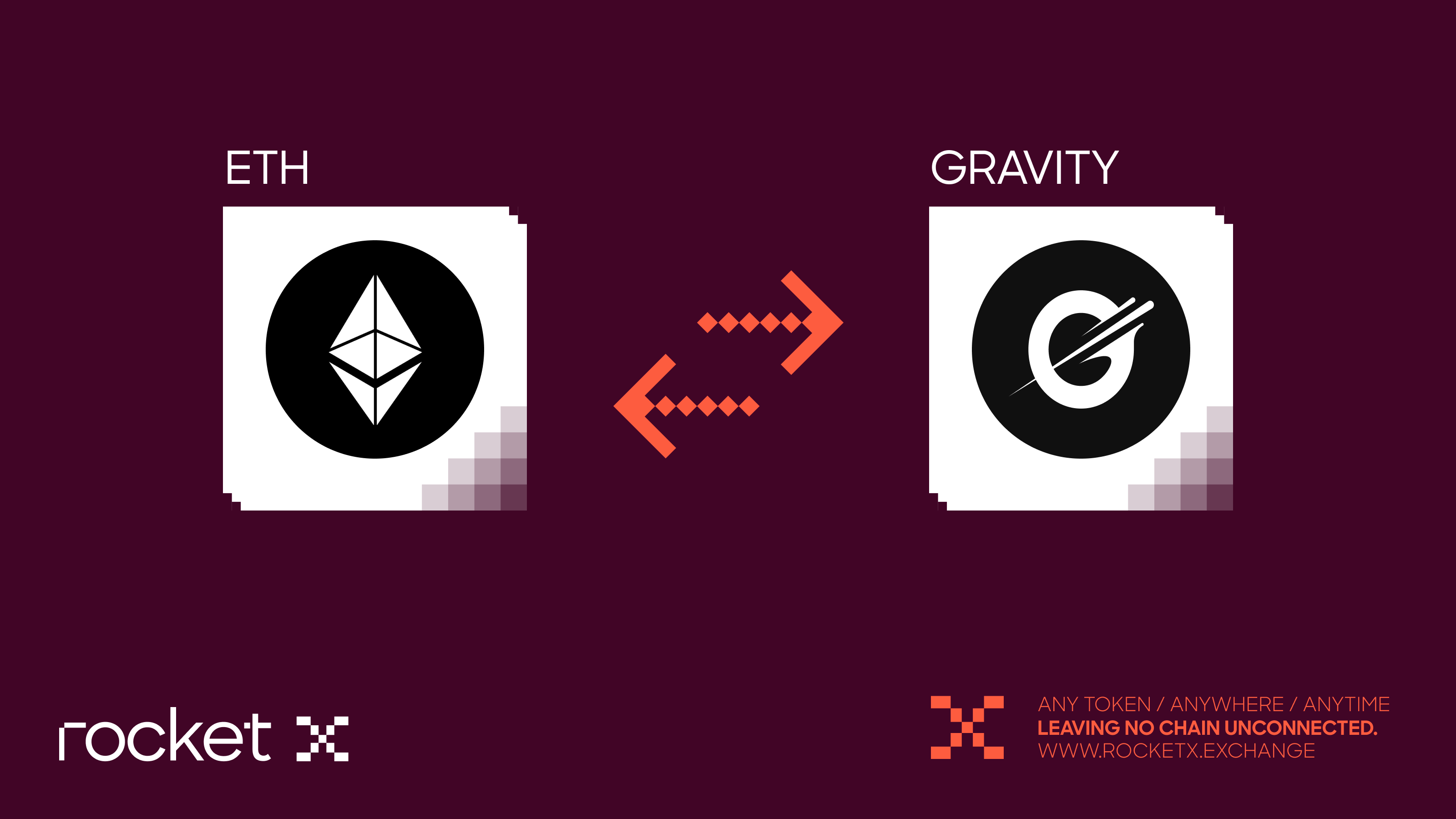
Introduction
As the Web3 world accelerates toward an omnichain future, Gravity Chain has emerged as a next-gen Layer 1 blockchain designed to unify fragmented experiences across multiple networks. With a mission to make cross-chain interactions feel as effortless as using a single app, Gravity Chain delivers high throughput, sub-second finality, and full EVM compatibility—all while abstracting technical complexity for users and developers alike.
Deeply integrated with the Galxe ecosystem and already processing millions of transactions monthly, it is fast becoming a foundational layer for dApps, loyalty systems, on-chain identities, and more.
But to truly access its full potential, users need a seamless way to bridge to Gravity Chain without jumping through hoops—and that’s where RocketX Exchange comes into play. In this article, we’ll explore everything you need to know about Gravity Chain—from its architecture and tokenomics to its real-world use cases and how to access it easily.
What Is Gravity Chain? Vision, Founders, and Key Details
Gravity Chain is a live, high-performance Layer 1 blockchain built to simplify how we interact with Web3. Instead of jumping between networks, bridges, and tools, Gravity lets users do everything—swapping tokens, joining quests, earning rewards, managing digital identity—all in one place, with one wallet, across any chain.
Founded by Martins Benkitis and Edgars Laimite, Gravity Chain was developed by the team behind Galxe, Web3’s largest on-chain distribution platform. If you’ve ever used Galxe Quest, Score, or Passport, you’ve already experienced the power of their ecosystem. Gravity now takes that infrastructure on-chain, bringing more transparency, faster execution, and greater control to users and developers alike.
From the start, Gravity Chain wasn’t just built for performance—it was built for scale. It uses the Orbit stack, powered by Arbitrum Nitro technology, to enable near-instant transaction finality and low gas costs. Combined with advanced features like Zero-Knowledge Proofs, staking-based security, and full EVM compatibility, it delivers a seamless omnichain experience while abstracting away all the technical complexity from the user.
What sets Gravity apart is that it’s not launching from scratch. It’s already integrated with Galxe’s suite of live products like Smart Savings, Galxe Quest, Score, Alva, and Identity Protocol, and processes over 60 million transactions monthly, already more than double what Ethereum handles today.
To support future builders, the ecosystem is backed by a $50 million VC Alliance, focused on accelerating DeFi apps, loyalty platforms, games, and fully on-chain experiences. In short, Gravity Chain brings all the scattered pieces of Web3 together and makes them feel like one unified, user-friendly platform.
How Gravity Chain Works: Making Web3 Feel Effortless
Gravity Chain is built to make Web3 feel simple. Instead of being just another blockchain, it acts like a central hub that connects with many other blockchains at once. This means users and developers can move tokens, use apps, and complete tasks across different chains, without needing to switch wallets or learn new tools.
The best part? You don’t have to worry about the complicated tech behind the scenes. Gravity takes care of all that through something called “full-chain abstraction.” So, if you’re using a token from another chain to join a quest or interact with a dApp, Gravity handles everything in the background—you just see a smooth, easy experience.
Here’s how Gravity makes it happen:
- EVM Compatible – Works just like Ethereum, so you can use the same smart contracts and wallets.
- Sub-Second Finality – Transactions are confirmed almost instantly, so there’s no waiting around
- Grevm (Parallel EVM) – Can handle lots of transactions at once, making the chain super fast.
- Restaking Security – Uses security from big networks like Ethereum and Bitcoin through EigenLayer and Babylon.
- Zero-Knowledge Proofs – Keeps your data private while proving transactions are valid.
- Orbit Stack & Arbitrum Nitro – Helps the chain run smoothly with low fees and high speed.
In simple terms, Gravity lets you do more across chains—faster, safer, and without stress. It’s built for the future of Web3, where everything is connected and easy to use.
Everything You Need to Know About the G Token
The G token is the core utility token of both the Gravity Chain and the Galxe ecosystem. It’s used to pay gas fees, secure the network through staking, enable governance, and power all interactions across Galxe’s suite of products like Quest, Passport, and Score. If you’re using apps built on Gravity or participating in Galxe campaigns, G is the token that drives it all.
With the launch of Gravity Chain, the older GAL token is being replaced by G. GAL holders can easily migrate their tokens using the official migration portal. This change unifies the entire ecosystem under one token, making things simpler and more efficient for users and developers alike.
In terms of tokenomics, G has a total supply of 12 billion tokens, spread across Ethereum, Gravity, BNB Chain, and other major networks. The largest share—60.27%—comes from the GAL token migration. Other allocations include 10.42% to the team, 10.27% for the community, and the rest distributed among the foundation, marketing, advisors, and early backers.
G is also designed to be omnichain. Using LayerZero’s OFT standard, it can move freely across multiple blockchains, making it extremely flexible and future-ready for Web3.
How to Bridge to Gravity Chain Using RocketX
With Gravity Chain emerging as the backbone of Galxe and the future of omnichain Web3, the time to act is now. Whether you’re joining Galxe Quests, migrating from GAL to G, or exploring on-chain identity apps, you’ll need G tokens—and the fastest, easiest, and safest way to get them is by bridging directly to Gravity Chain.
That’s where RocketX comes in.
RocketX makes it incredibly simple to bridge your assets from 190+ blockchains—all through a single platform, with the best rates, fastest routes, and non-custodial security. No switching tabs. No juggling wallets. Just a smooth, unified experience that gets your tokens to Gravity in minutes.
Now, let’s walk through how to bridge to the Gravity Chain easily using RocketX Exchange.
Step-by-Step: Bridging to Gravity Chain Using RocketX
Go to the RocketX dApp
Go to https://app.rocketx.exchange in your web browser.
Click “Connect Wallet.”
Choose a wallet that holds your tokens (e.g., MetaMask for Ethereum, Phantom for Solana). and approve the connection.
Choose Source Network and Token
Choose the blockchain where your tokens are currently stored, such as Ethereum, Arbitrum, BNB Chain, etc. Then, select the token you want to send (e.g., ETH, USDT, USDC).
In this guide, we’re bridging ETH from Ethereum to Gravity Chain, but you can choose any supported token from any blockchain to bridge to Gravity—flexibility is completely in your hands.
Select Gravity as the Destination Chain
In the destination section, choose Gravity Chain as the network where you want to receive tokens. Select the G token or any other available token you prefer to receive on Gravity.
Paste Recipient Address
Paste your Gravity wallet address under the “Recipient Address” field. Double-check to avoid errors.
Compare Quotes & Review Fees
RocketX instantly displays the Best and Fastest Quotes, showing the exchange name, estimated time, token price, gas fee, platform fee, slippage, and any available discounts—along with the % difference from the market rate to help you choose the best deal.
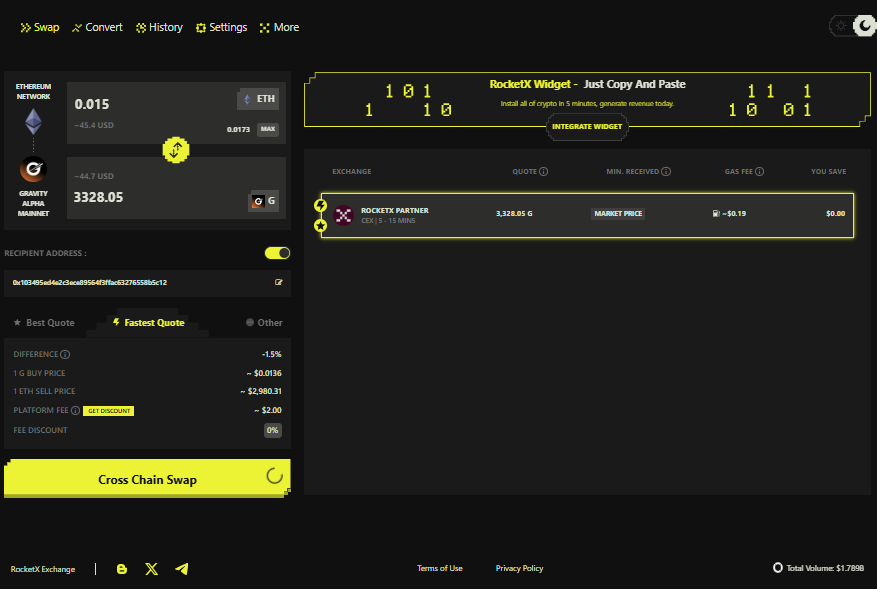
Click “Cross Chain Swap.”
Once satisfied, click the “Cross Chain Swap” button at the bottom. Your wallet will prompt you to approve the token first, and then confirm the swap.
Wait for the Transfer to Complete
After confirmation, RocketX handles everything automatically. Your G tokens will arrive in your Gravity wallet within the estimated time shown (usually under 5 mins).
Best Wallets to Store Gravity Chain Tokens
After bridging to Gravity Chain, it’s important to choose a wallet that fully supports the network so you can store, stake, and interact with your tokens without any hassle. Luckily, Gravity Alpha Mainnet is already supported by many popular wallets, and several others allow you to manually add Gravity as a custom network.
Here are some of the top wallets you can use:
MetaMask and Trust Wallet both allow users to manually add Gravity Chain using RPC details. If you’re already using these wallets, it’s a quick and familiar setup. Safe (previously Gnosis Safe) is also deployed directly by the Gravity team for secure multi-signature needs.
Other wallets like OKX Web3 Wallet, Rainbow, MyEtherWallet, Zerion, Gate.io Wallet, Bitget Wallet, SafePal, and Keplr offer smooth Gravity integration, making them great options for Web3 users.
Whether you’re participating in Galxe quests, staking tokens, or simply holding tokens, these wallets make it easy to explore Gravity’s growing ecosystem.
👉 Still exploring wallet options? Check out our Best Crypto Wallets to Use in 2025 — a complete guide to the most secure, user-friendly wallets that work perfectly with networks like Gravity.
Conclusion
Gravity Chain is more than just another Layer 1—it’s a powerful, future-focused blockchain designed to simplify multichain experiences and bring Web3 to the masses. With its high-speed performance, advanced restaking security, EVM compatibility, and deep integration with Galxe’s on-chain infrastructure, Gravity offers a strong foundation for developers, creators, and everyday users.
At the center of this ecosystem is the G token, which fuels transactions, powers governance, and unlocks access to Galxe’s growing suite of products. With its omnichain design and LayerZero support, G can move seamlessly across major networks, making it highly usable and future-ready.
And when it comes to accessing Gravity, RocketX Exchange makes it effortless. By supporting direct bridging from over 190+ chains, RocketX provides a smooth, secure, and non-custodial way to onboard users into the Gravity ecosystem.
Whether you’re here to explore, build, or participate, Gravity is ready for the next wave of adoption. And with RocketX, bridging into that future is just a few clicks away.

